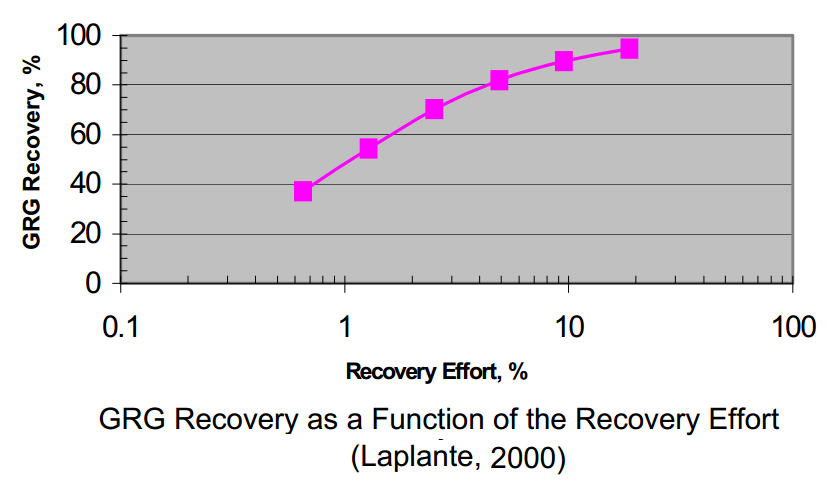Ten Laws of Gravity Gold Recovery
|
DO |
DON’T |
|
|
The following statements are generally applicable:
- Gold grinds between 5 and 20 times slower than its gangue.
- About 99% of all GRG fed to a cyclone reports to its underflow, unless it is a primary cyclone in a two-stage classification circuit.
- GRG below 25 pm still reports to cyclone underflows in a proportion ranging between 75 and 95%.
- Gold particles above 75 pm circulate between 50 and 100 times in a grinding circuit, unless they are recovered by gravity.
- Once a particle of GRG breaks, more than 90% of its fragments are gravity recoverable.
The recommendations can be summarized as follows:
- Proper design of the concentrate receiving tank, to minimize entrainment of fine gold with the return water.
- Proper design of the bottom of the tank for easy concentrate removal: taper, water addition, and correct choice of valve.
- Screening and magnetic removal of tramp iron from concentrate prior to tabling.
- Centrifuge-based scavenging of fine table tails.
- Recovery of spillage on the floor of the gold room (to be pumped to the primary concentrate tank).
- Recycling of the tails from the gold room to the primary gravity unit.
- Nitric acid treatment of the final concentrate when copper blasting wire is used.
- Design of the gold room for headroom as much as floor space, to take advantage of gravity flow.
- Recycling of the cleaner table tailing and rougher table middling to the primary concentrate hopper
- Intensive cyanidation of primary concentrate or table tails if appropriate.
Original text by A.R. Laplante


